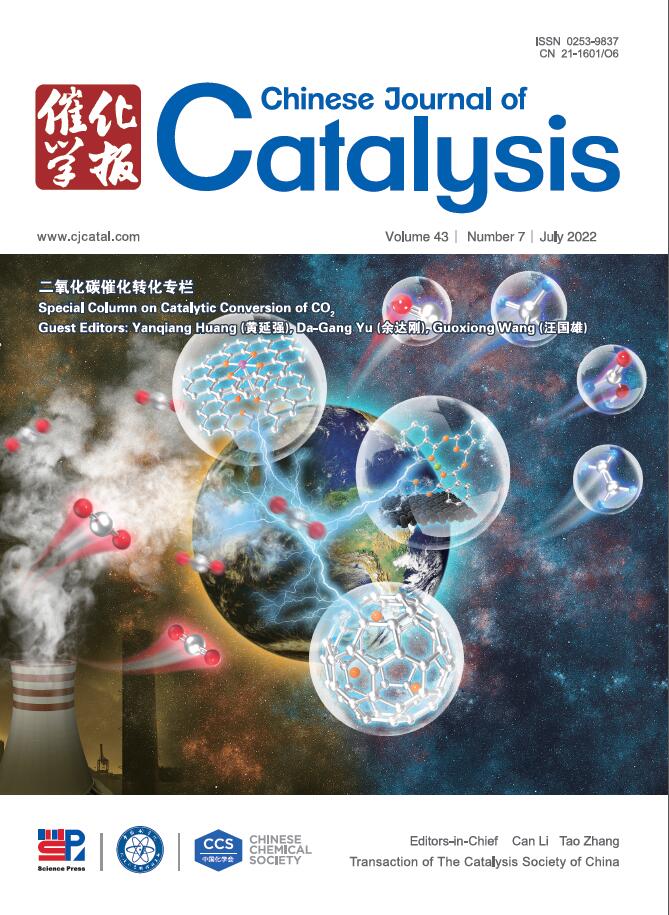Reversible encapsulation tailored interfacial dynamics for boosting the water-gas shift performance
IF 15.7
1区 化学
Q1 CHEMISTRY, APPLIED
引用次数: 0
Abstract
ABSTRACT
Revealing the structure evolution of interfacial active species during a dynamic catalytic process is a challenging but pivotal issue for the rational design of high-performance catalysts. Here, we successfully prepare sub-nanometric Pt clusters (~0.8 nm) encapsulated within the defects of CeO2 nanorods via an in-situ defect engineering methodology. The as-prepared Pt@d-CeO2 catalyst significantly boosts the activity and stability in the water-gas shift (WGS) reaction compared to other analogs. Based on controlled experiments and complementary (in-situ) spectroscopic studies, a reversible encapsulation induced by active site transformation between the Pt2+-terminal hydroxyl and Ptδ+-O vacancy species at the interface is revealed, which enables to evoke the enhanced performance. Our findings not only offer practical guidance for the design of high-efficiency catalysts but also bring a new understanding of the exceptional performance of WGS in a holistic view, which shows a great application potential in materials and catalysis.
可逆封装量身定制的界面动力学,以提高水气转换性能
揭示动态催化过程中界面活性物质的结构演变是合理设计高性能催化剂的关键问题。本文通过原位缺陷工程方法,成功制备了封装在CeO2纳米棒缺陷内的亚纳米Pt团簇(~0.8 nm)。与其他类似物相比,制备的Pt@d-CeO2催化剂显著提高了水气转换(WGS)反应的活性和稳定性。基于对照实验和互补(原位)光谱研究,揭示了Pt2+末端羟基和Ptδ+-O空位之间的活性位点转化诱导的可逆包封,从而提高了性能。我们的研究结果不仅为高效催化剂的设计提供了实用指导,而且从整体上对WGS的优异性能有了新的认识,在材料和催化方面显示出巨大的应用潜力。
本文章由计算机程序翻译,如有差异,请以英文原文为准。
求助全文
约1分钟内获得全文
求助全文
来源期刊

Chinese Journal of Catalysis
工程技术-工程:化工
CiteScore
25.80
自引率
10.30%
发文量
235
审稿时长
1.2 months
期刊介绍:
The journal covers a broad scope, encompassing new trends in catalysis for applications in energy production, environmental protection, and the preparation of materials, petroleum chemicals, and fine chemicals. It explores the scientific foundation for preparing and activating catalysts of commercial interest, emphasizing representative models.The focus includes spectroscopic methods for structural characterization, especially in situ techniques, as well as new theoretical methods with practical impact in catalysis and catalytic reactions.The journal delves into the relationship between homogeneous and heterogeneous catalysis and includes theoretical studies on the structure and reactivity of catalysts.Additionally, contributions on photocatalysis, biocatalysis, surface science, and catalysis-related chemical kinetics are welcomed.
 求助内容:
求助内容: 应助结果提醒方式:
应助结果提醒方式:


